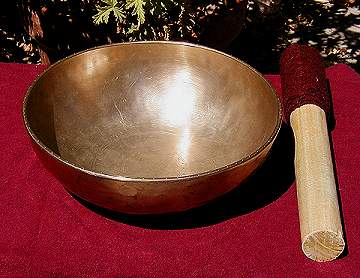

|
How to Approach
|
The two most important things are the intention you bring to your work with the bowls, and your willingness to open to the bowl's teachings. In my understanding, the bowls will amplify the intention you bring to practice, but they are most effective when your intention lines up with the purpose they were created with--altering consciousness that all beings may be enlightened. Any "white" practice to center and focus intention is appropriate to use as you approach the bowls.
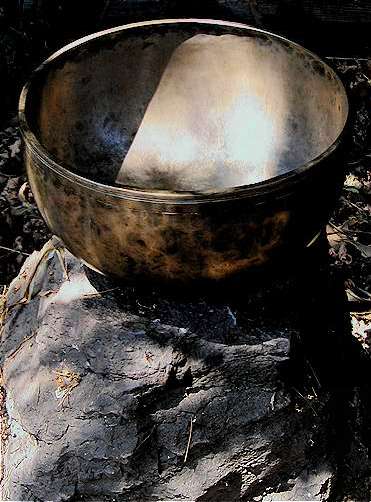
|

|
| A large Tibetan bowl. | Inside the bowl are patches of green oxides. |
The technology of the bowls is ancient, as is the stuff of their very bodies. The bowls in my care have been released from the Himalayas specifically to bring their ancient wisdom and healing power to bear in today's troubled world.
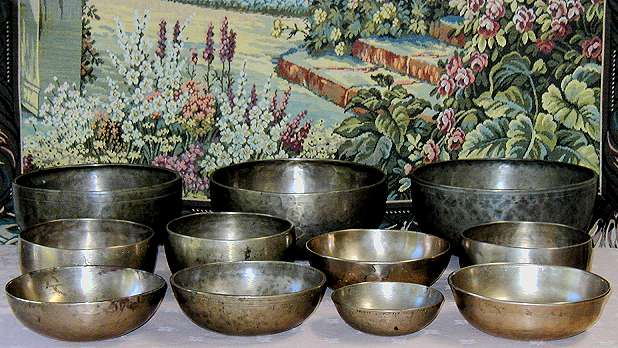
A set of bowls, suitable for a "sound healing" practitioner
The bowls are able to integrate with any "white" practice that we use for healing and raising consciousness; and if we are open, they can help us re-member ancient ways that have been lost to us. I specifically do not use mantras or prayers with words when I am working with the bowls, although I approach my practice with them prayerfully. When you are talking, you are not listening, and my work with the bowls stems from a deep commitment to open to what these ancient sacred instruments have to teach.
One thing that bears repeating is that we always want to let a bowl ring until it is finished speaking. On occasion, you may invite the bowl's vibration into your body directly, slowly and gently making greater contact with the base, effectively dampening the bowl's voice but honoring its energetic gift.
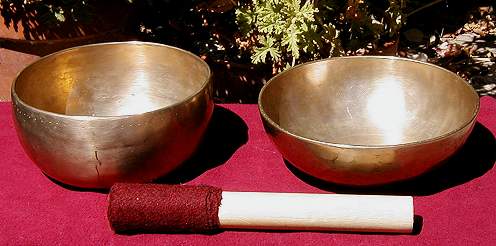
Left: a Bhutanese bowl. Right: a Tibetan bowl.
I don't do anything specifically to close my practice with the bowls, except to let them ring and to be present with them until they quiet. To me, this is the most reverent thing I can do.
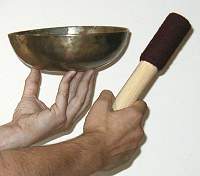
![]()
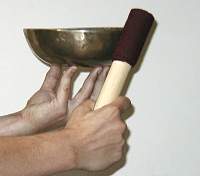
Ringing a Tibetan bowl by striking it
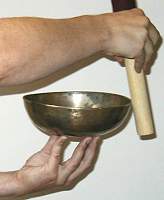
![]()
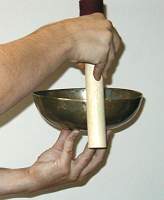
![]()
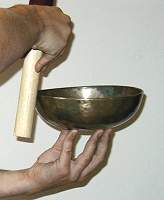
![]()
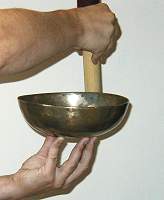
Ringing a Tibetan bowl by the "wineglass" method
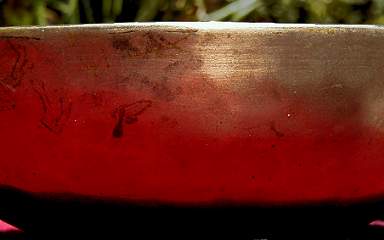
The rim of this bowl is polished by ringing.
So in short, just be clear about your intent, and open your heart and your awareness to the bowls.
The bowls available for purchase in shops are usually of contemporary manufacture. The methods of making the ancient bowls—both the metallurgy and the rituals—have been lost over time. Modern bowls can deliver a pure, beautiful tone, but they often lack the rich harmonics the ancient bowls provide. If you can, be patient and locate a dealer in Himalayan bowls.
Since you will use your bowl for meditation, healing, and relaxation, your peace of mind depends on knowing that your bowl came to you in an honorable way. A bowl is both an antiquity and a religious artifact. You must feel confident that, for example, an unscrupulous collector did not inflate his profit by taking advantage of a pauper.
Our bowls came to us through Richard Rudis, himself a Buddhist who learned the use of the bowls from Lamas in Tibet. He states that all artifacts he offers "have been collected directly from the indigenous Tibetan people either within their country or from refugees. Every effort is made to conduct business in a honorable fashion: where all parties win within each transaction." We have attended his workshops and have chatted with him over dinner; we trust his sincerity. No doubt there are others, but Richard is the only dealer that we've "interviewed."
Back to the Essays Index
© 2002 NuMoon Creations